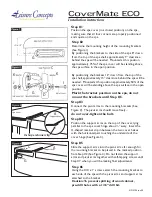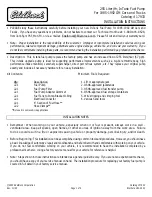
29
A Product of Progress Mfg. Inc.
Warranty
Limited 10 Year Warranty: Progress Mfg. Inc. warrants the e2™ hitch against latent
defects in materials and workmanship under normal use and service, ordinary wear
and tear is excepted, to the original owner for a period of 10 years from the first date
of purchase at retail up to the value of its original purchase price. If this product is
latently defective it will be replaced or repaired when a proper return authorization is
obtained and the product is returned with transportation charges prepaid to Progress
Mfg. Inc. Progress Mfg. Inc. shall not be required to replace or repair any products
damaged as a result of improper installation, alteration, unreasonable use, or improper
maintenance including, without limitation, loading the product beyond the factory
rated load capacity. This warranty does not include labor charges nor does it include
transportation charges for returning the product to the consumer. To the extent
allowed by law, Progress Mfg. Inc. shall not be liable for any incidental, consequential,
or any other damages including, without limitation, breach of any implied warranty,
merchantability, or fitness for a particular purpose of any e2 product. In no event shall
Progress Mfg. Inc. be liable for any damages other than the replacement or repair of
the affected part. Authorization and warranty procedure may be obtained by calling
Progress Mfg. Inc. customer service at 877-523-9103.
Submit your warranty registration online at fastwaytrailer.com.
corresponding weight distribution calculation will be reasonably accurate.
If the system adjusts both front and rear axle heights, this new measurement will
only be a reference measurement or estimate of the current weight distribution. It
may no longer correlate to the load on the front axle when compared with previous
measurements since the height may have been adjusted by the auto-level system.
The true weight distribution numbers must be obtained at a CAT scale.
Step 8 - Trailer Pitch Adjustment
After achieving good weight distribution with auto-level engaged, trailer pitch may
need to be adjusted.
Before checking, start the vehicle and make sure the auto-level system is on and has
leveled the vehicle until it stops moving. Measure the trailer as described in Step 8
and make any required adjustments to the hitch setup.
Step 11 and 12 - Hitching Up and Unhitching
Before hitching up or unhitching, set the leveling system to normal ride height, then
turn off the auto-level system by turning off the vehicle or, if equipped, placing the
system in jack mode.




































